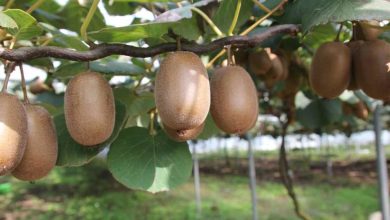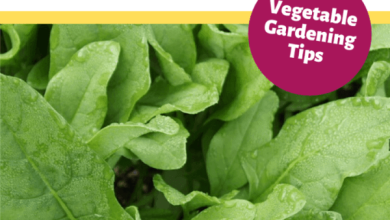Types of Carrots: [Characteristics, Origin, Classifications]
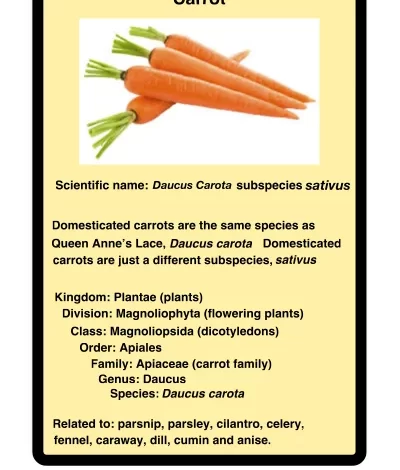
Characteristics of carrots
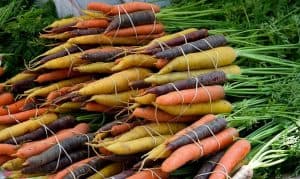 It is no exaggeration to say that the carrot is one of the best known and most cultivated vegetables worldwide.
It is no exaggeration to say that the carrot is one of the best known and most cultivated vegetables worldwide.
It has many nutritional qualities, a very high antioxidant power and great versatility in the preparation of delicious dishes.
Likewise, it is an edible tuberous root tuber rich in beta-carotene or vitamin A, vitamins C, K and vital nutrients, such as magnesium, calcium, phosphorus and potassium, among other carotenoid compounds.
Origin of carrots
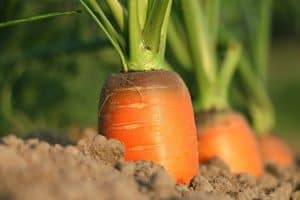 It has been established that the origin of this tuber is found in the customs developed by the peoples of the hot and dry lands of Afghanistan and Iran, from the year 3000 BC.
It has been established that the origin of this tuber is found in the customs developed by the peoples of the hot and dry lands of Afghanistan and Iran, from the year 3000 BC.
At this time the commercialization of its seed began, transported in caravans that even reached the rest of the Arab, Asian lands and burning Africa.
At least until the 17th century, black, white, red or purple varieties were available. But thanks to the inventiveness of Dutch growers, from that time on the orange carrot made its appearance, the most widespread, said to be a tribute to the ruling Dutch Royal House of Orange.
Currently, the world’s leading producer of carrots is China, followed by the United States and seconded by Russia. A curious fact about carrots is that, in addition to the characteristic orange color of today, there are also varieties in colors such as yellow, red, white and even purple.
An entire multicolored parade that distinguishes about 100 fully identified varieties around the globe. Let’s now see the most popular or well-known types of carrot classification, both by color and by region.
Varieties of carrots according to their color
red carrot
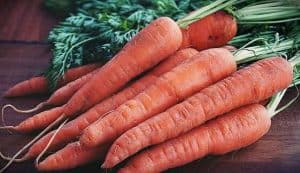 The outer layer of this carrot can range from pinkish-red to purplish-red with a pink to orange core or center. It has a sweeter flavor than other varieties.
The outer layer of this carrot can range from pinkish-red to purplish-red with a pink to orange core or center. It has a sweeter flavor than other varieties.
Its high nutritional value helps reduce the risk of contracting deadly diseases such as cancer.
yellow carrot
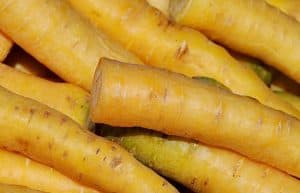 Its growers seek to obtain a sweeter variety and it is characterized by the fact that its primary root is not fibrous. It is very crunchy and has a sweet-earthy flavor, with bits of parsley and celery.
Its growers seek to obtain a sweeter variety and it is characterized by the fact that its primary root is not fibrous. It is very crunchy and has a sweet-earthy flavor, with bits of parsley and celery.
It has high levels of the carotenoid lutein, which the human body absorbs as vitamin A.
white carrot
This variety does not have pigments, so it has no color. Their flavor is much milder than orange ones and they are sometimes confused with parsnips or parsnips.
purple carrot
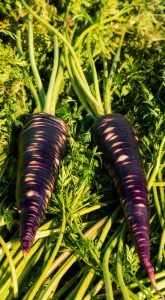 This variety is the oldest, dating back millions of years, when it was grown in Afghanistan. It therefore supports very high temperatures that can exceed 50ºC and more, which gives it a characteristic purple colour.
This variety is the oldest, dating back millions of years, when it was grown in Afghanistan. It therefore supports very high temperatures that can exceed 50ºC and more, which gives it a characteristic purple colour.
Its vitamin properties are similar to the rest, except that it is very rich in anthocyanins, an antioxidant present in large quantities in blueberries that provide great health benefits.
orange carrot
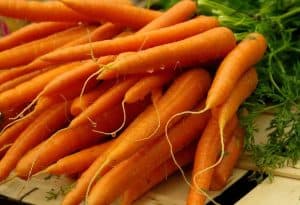 It burst into Holland in the 17th century, when its growers insisted on producing a sweeter tuber with a less fibrous core than its predecessors.
It burst into Holland in the 17th century, when its growers insisted on producing a sweeter tuber with a less fibrous core than its predecessors.
It became the most consumed variety in all of Europe and spread throughout the world, especially in the western region.
Types of carrots according to their names and regions
Danvers Carrots
This variety stands out for being the most popular or majority worldwide, since it is very sweet orange carrots, crunchy with a soft core and elongated, until it narrows at the tip.
Imperator Carrot
 It is a very present variety at a commercial level, because producers harvest it on a large scale to take it to food sales and distribution centers, supermarkets, among other businesses.
It is a very present variety at a commercial level, because producers harvest it on a large scale to take it to food sales and distribution centers, supermarkets, among other businesses.
They are thicker than the Danvers. They have more sugar than any other variety.
Carrot from Nantes
They have the special characteristic of having a shorter or blunt tip and are very sweet with a pulpy or soft center.
Antares Carrot
Its cultivation is preferably done in summer and autumn. It has a cylindrical shape and is sown between the months of March to May.
Karol Carrot
It is an early variety, which grows quickly and has a very pleasant sweet taste on the palate. Its cultivation is carried out on light land.
Gemini Carrot
It is a variety very given to resist environments of high humidity and great uniformity.
Baby Carrot
It is another variety of early cultivation, whose root is smooth and fine, highly tolerant to soils that are not very sandy.
Tempo Carrot
It is a variety especially resistant to sandy soils.
Carrot Pluto
 It is grown in spring, towards the end of this beautiful season. It can also be done in the summer, because it completes a rapid vegetation cycle.
It is grown in spring, towards the end of this beautiful season. It can also be done in the summer, because it completes a rapid vegetation cycle.
There are other varieties such as Caracas, Adelaide hybrid, Kyoto red, Atomic red, Snow White, Cosmic purple, Muscade, Berlicum, Chantenay, Kuroda, Pusa asita, Exheard, Lunar White, Jaune Obtuse du Doubs.
Bibliography and references
- De Rosamel, Chantal. (2019). The carrots. Publisher Parkstone International. New York, USA.
- Francis, Caroline. (1984). All about the carrot. Publisher Edaf. Madrid Spain.
- Vaga, Eugenio G. (1979). Carrot, cabbage, artichoke, grape. They heal and heal. Publisher DeVecchi. Barcelona, Spain.
- Ortiz, W. N.; Enciso Garay, CR; Rios Arevalos, R. (2013). Comparison of the yield of five carrot varieties. Agricultural Research Magazine. National University of Asuncion. San Lorenzo, Paraguay. Reproduced from: http://www2.agr.una.py/revista/index.php/ria/article/view/83/79
- Enciso Garay, Cipriano Ramón; Zaracho Aguilar, Cesar Marcelo. (2013) . Evaluation of carrot varieties sown in summer. Agricultural Research Magazine. National University of Asuncion. San Lorenzo, Paraguay. Reproduced from: http://www2.agr.una.py/revista/index.php/ria/article/view/218/211

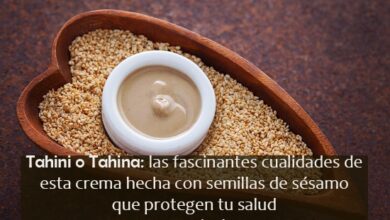
![Photo of Guide to Plant a Peach Tree: [Complete Step by Step]](https://www.complete-gardening.com/wp-content/uploads/2022/08/guide-to-plant-a-peach-tree-complete-step-by-step-390x220.png)
